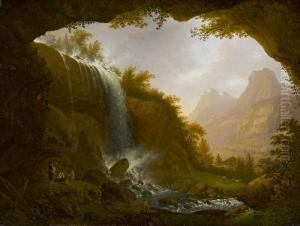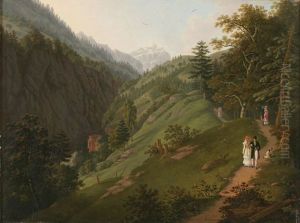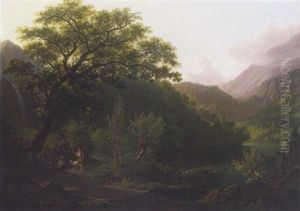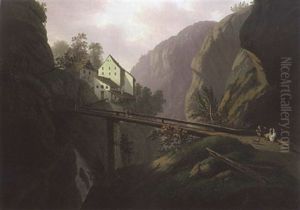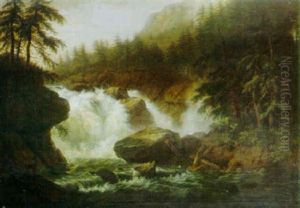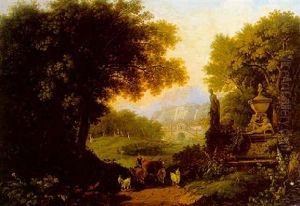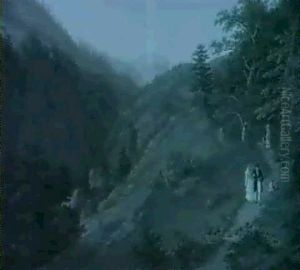Johann Caspar Rahn Paintings
Johann Caspar Rahn was a Swiss landscape painter born on May 16, 1772, in Zurich, Switzerland. He was part of the early 19th-century art movement that emphasized the beauty and emotion in landscape art, which was a shift from the grand historical and religious subjects that dominated the art scene during the previous centuries.
Rahn's education and artistic training began in Zurich, and he further honed his skills by studying in various parts of Switzerland and Germany. His work was influenced by the Dutch landscape painters of the 17th century, and he was known for his keen observation of nature and the ability to capture the atmospheric effects of light and weather in his paintings. Rahn's landscapes often depicted the Swiss countryside, imbuing them with a sense of romanticism that was becoming popular at the time.
Throughout his career, Rahn remained active in the Swiss art community. He was one of the founding members of the Zurich Art Association (Kunstverein), and his work was widely recognized and appreciated in his homeland. Rahn's landscapes have a timeless quality that continues to appeal to art lovers, and his contribution to Swiss art history is significant, as he helped to promote an appreciation for the natural beauty of the Swiss landscape.
Johann Caspar Rahn passed away on February 7, 1840, in Zurich. His legacy lives on through his charming landscapes that continue to be admired by art enthusiasts and historians alike. Rahn's work is a testament to the early 19th-century artistic shift towards nature and the landscape genre, and it represents an important chapter in the history of Swiss art.
